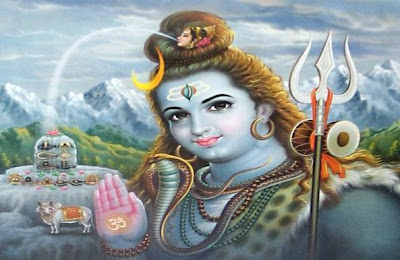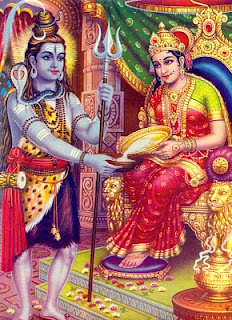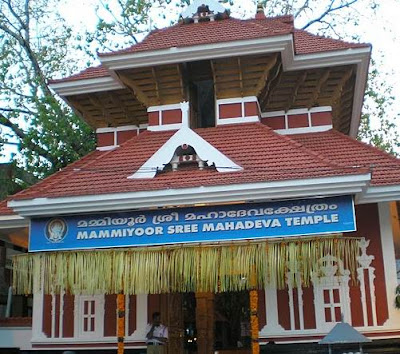Meenakshi Sundareswarar Temple or Madurai Meenakshi Amman Temple is an
ancient Hindu temple, located in the sacred city of Madurai, Tamil Nadu.
Built in the 17th century, Arulmigu Meenakshi Sundareshwarar
Thirukkovil is one of the largest and the biggest temples in India. Lord Shiva is worshipped here as Sundareswarar (meaning Beautiful Lord) and his consort, Goddess Parvati
is worshipped in the form of Meenakshi (Meenatchi), also called
Angayarkanni. Renowned for its stunning architecture, the temple is
built around the lotus shaped city, Madurai and the outer towers of the
Meenakshi Amman Temple are the landmarks of the city.
Temple Architecture
Built by Kulasekara Pandyan, the 2000 years old Madurai Meenakshi Temple is a colossal structure and a good example of Dravidian style of temple architecture. Enriched with architectural and sculptural magnificence, the temple complex is surrounded by elevated walls. The sanctums of Lord Sundareswarar and Meenakshi are enclosed by a several smaller shrines and majestic pillared halls. The remarkable feature of the temple is the 12 towers that are covered with stucco figures of deities, mythical animals and monsters, painted in bright colors. Notable one is the Southern tower which extends to a height of about 170 ft.
 Ashta Shakthi Mandapam
is located at the eastern entrance. Next to this is the Meenakshi Nayak
Mandapam which has a lamp-holder with 1,008 lamps. The lamps are lit on
festive occasions and is a spectacular sight. There are sculptures on
the pillars which portray Lord Shiva's Thiruvilayadals (miracles) and
the stories related to Meenakshi's birth. Meenakshi Nayakkar Mandapam,
found near the Astha Shakthi Mandapam, consists of 110 pillars. The
pillars are carved with the figures of a peculiar animal with a lion's
body and an elephant's head called Yalli.
Ashta Shakthi Mandapam
is located at the eastern entrance. Next to this is the Meenakshi Nayak
Mandapam which has a lamp-holder with 1,008 lamps. The lamps are lit on
festive occasions and is a spectacular sight. There are sculptures on
the pillars which portray Lord Shiva's Thiruvilayadals (miracles) and
the stories related to Meenakshi's birth. Meenakshi Nayakkar Mandapam,
found near the Astha Shakthi Mandapam, consists of 110 pillars. The
pillars are carved with the figures of a peculiar animal with a lion's
body and an elephant's head called Yalli.
Porthamarai Kulam (Golden Lotus Tank) – This is an ancient temple tank located inside the Meenakshi Sundareswarar Temple. Devotees take bath in this holy water and the tank is bounded by a pillared corridor. On the western side of the tank are the Oonjal (swing) Mandapam and Killikoontu (parrot cage) Mandapam. Every Friday, the golden idols of Meenakshi and Sundareswarar are placed on the swing in the Oonjal Mandapam and hymns are sung. Lord Sundareswarar’s shrine is to the north of Kilikoontu Mandapam. Sundareswarar is worshipped in the form of a linga, supported by 64 bhootaganas, 32 lions and 8 elephants. The idol of Lord Ganesh called as Mukkurini Pillaiyar is on the way. The base of the Kadamba tree under which Indra worshipped Shiva linga is on the corridor outside the main shrine. There is a unique idol of Nataraja who is covered with silver leaves. Hence the hall is named as Velli Ambalam (Silver Hall). Meenakshi shrine is on the left of the Shiva shrine.
The Aayiram Kaal Mandapam or Thousand Pillar Hall contains beautifully decorated and sculpted carved pillars. Temple Art Museum is housed inside the hall. On the west of the Ayirankkal Mandapam are the Musical Pillars which produces a different musical note when stuck.
The Kalyana Mandapam is to the south of the Pillared Hall, where the marriage of Shiva and Parvati is celebrated every year during the Chitirai Festival in mid-April.
Madurai Meenakshi Temple Festivals
Meenakshi Sundareswarar Temple celebrates one festival on every month from January to December. Of the festivals, the most important festival is the Chithirai Brahamostavam Festival or Meenakshi Thirukalyanam (The divine marriage of Goddess Meenakshi and Lord Sundareswarar), celebrated in the Tamil month of Chithirai (April) every year. Theppa Thiruvizha (float festival) is held for seven days in the month of January.
Other festivals celebrated in the Madurai Meenakshi Temple include
1) Vasantham Festival – Vaikasi month - May
2) Unjal Festival - Aani month - June
3) Aadi Mulai Kottu Festival - Aadi month – July
4) Aavani Moolam Festival – Puttukku Mansumantha Leela Festival – Aavani month - August
5) Navarathri Festival – Purattasi month – September
6) Kolattam Festival –Ayppasi month – October
7) Kolattam Festival - Karthikai month – November
8) Thiruvathirai – Arudhra Dharsan Festival and Thiruvembavai and Thiruppavai Festival – Margali month – December
9) Float Festival – Thai month – January
10) Maasi Mandala utsavam – Masi month – February
11) Summer Vasantham Festival - Panguni month – March
Temple Timings
The temple is open from 5 am to 1 pm and from 4 pm to 10 pm.
How to Reach Madurai Meenakshi Temple
Madurai has an airport, located about 12 km from the city. Madurai Junction Railway Station is the nearest railway station, which is just a few minutes walking distance from the temple. Madurai Central Bus Station is located nearby, and one can access bus services to other major destinations in and around Tamil Nadu.
Temple Architecture
Built by Kulasekara Pandyan, the 2000 years old Madurai Meenakshi Temple is a colossal structure and a good example of Dravidian style of temple architecture. Enriched with architectural and sculptural magnificence, the temple complex is surrounded by elevated walls. The sanctums of Lord Sundareswarar and Meenakshi are enclosed by a several smaller shrines and majestic pillared halls. The remarkable feature of the temple is the 12 towers that are covered with stucco figures of deities, mythical animals and monsters, painted in bright colors. Notable one is the Southern tower which extends to a height of about 170 ft.
 Ashta Shakthi Mandapam
is located at the eastern entrance. Next to this is the Meenakshi Nayak
Mandapam which has a lamp-holder with 1,008 lamps. The lamps are lit on
festive occasions and is a spectacular sight. There are sculptures on
the pillars which portray Lord Shiva's Thiruvilayadals (miracles) and
the stories related to Meenakshi's birth. Meenakshi Nayakkar Mandapam,
found near the Astha Shakthi Mandapam, consists of 110 pillars. The
pillars are carved with the figures of a peculiar animal with a lion's
body and an elephant's head called Yalli.
Ashta Shakthi Mandapam
is located at the eastern entrance. Next to this is the Meenakshi Nayak
Mandapam which has a lamp-holder with 1,008 lamps. The lamps are lit on
festive occasions and is a spectacular sight. There are sculptures on
the pillars which portray Lord Shiva's Thiruvilayadals (miracles) and
the stories related to Meenakshi's birth. Meenakshi Nayakkar Mandapam,
found near the Astha Shakthi Mandapam, consists of 110 pillars. The
pillars are carved with the figures of a peculiar animal with a lion's
body and an elephant's head called Yalli.Porthamarai Kulam (Golden Lotus Tank) – This is an ancient temple tank located inside the Meenakshi Sundareswarar Temple. Devotees take bath in this holy water and the tank is bounded by a pillared corridor. On the western side of the tank are the Oonjal (swing) Mandapam and Killikoontu (parrot cage) Mandapam. Every Friday, the golden idols of Meenakshi and Sundareswarar are placed on the swing in the Oonjal Mandapam and hymns are sung. Lord Sundareswarar’s shrine is to the north of Kilikoontu Mandapam. Sundareswarar is worshipped in the form of a linga, supported by 64 bhootaganas, 32 lions and 8 elephants. The idol of Lord Ganesh called as Mukkurini Pillaiyar is on the way. The base of the Kadamba tree under which Indra worshipped Shiva linga is on the corridor outside the main shrine. There is a unique idol of Nataraja who is covered with silver leaves. Hence the hall is named as Velli Ambalam (Silver Hall). Meenakshi shrine is on the left of the Shiva shrine.
The Aayiram Kaal Mandapam or Thousand Pillar Hall contains beautifully decorated and sculpted carved pillars. Temple Art Museum is housed inside the hall. On the west of the Ayirankkal Mandapam are the Musical Pillars which produces a different musical note when stuck.
The Kalyana Mandapam is to the south of the Pillared Hall, where the marriage of Shiva and Parvati is celebrated every year during the Chitirai Festival in mid-April.
Madurai Meenakshi Temple Festivals
Meenakshi Sundareswarar Temple celebrates one festival on every month from January to December. Of the festivals, the most important festival is the Chithirai Brahamostavam Festival or Meenakshi Thirukalyanam (The divine marriage of Goddess Meenakshi and Lord Sundareswarar), celebrated in the Tamil month of Chithirai (April) every year. Theppa Thiruvizha (float festival) is held for seven days in the month of January.
Other festivals celebrated in the Madurai Meenakshi Temple include
1) Vasantham Festival – Vaikasi month - May
2) Unjal Festival - Aani month - June
3) Aadi Mulai Kottu Festival - Aadi month – July
4) Aavani Moolam Festival – Puttukku Mansumantha Leela Festival – Aavani month - August
5) Navarathri Festival – Purattasi month – September
6) Kolattam Festival –Ayppasi month – October
7) Kolattam Festival - Karthikai month – November
8) Thiruvathirai – Arudhra Dharsan Festival and Thiruvembavai and Thiruppavai Festival – Margali month – December
9) Float Festival – Thai month – January
10) Maasi Mandala utsavam – Masi month – February
11) Summer Vasantham Festival - Panguni month – March
Temple Timings
The temple is open from 5 am to 1 pm and from 4 pm to 10 pm.
How to Reach Madurai Meenakshi Temple
Madurai has an airport, located about 12 km from the city. Madurai Junction Railway Station is the nearest railway station, which is just a few minutes walking distance from the temple. Madurai Central Bus Station is located nearby, and one can access bus services to other major destinations in and around Tamil Nadu.















